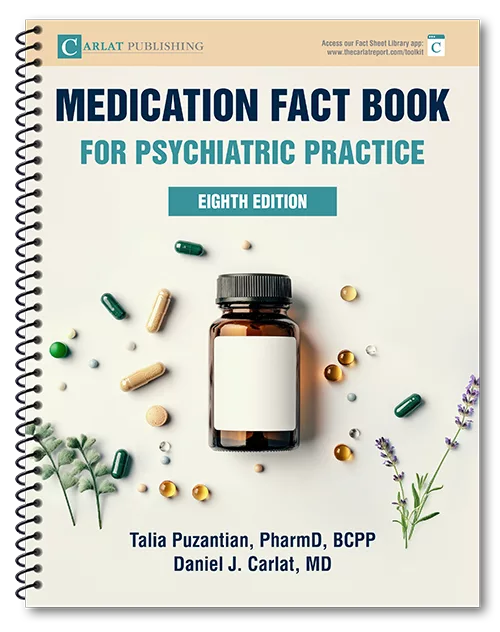Burnout: Causes, Risks, and Remedies

Dr. Lorenzo Norris is the Chief Wellness Officer, GW Academic Medical Enterprise; Associate Professor of Psychiatry, George Washington University, Washington, DC.
Dr. Norris has no financial relationships with companies related to this material.
CHPR: Dr. Norris, thank you for joining us today. To start, please tell us a bit about yourself.
Dr. Norris: Sure! I’ve been at George Washington University since 2006 and currently serve as the associate dean of student affairs and administration, the chief wellness officer, and the medical director of the Resiliency and Well-Being Center. I’ve worked with medical students, residents, and attending physicians and have learned a lot about burnout along the way. Outside of work, I’m married with two kids, and I’m a big fan of comic books and sci-fi. We also have two dogs—though deep down, I’m still a cat person.
CHPR: It sounds like you understand the importance of clinicians having outside interests for their mental well-being! Can you explain what burnout is?
Dr. Norris: Burnout is tricky to define because there’s no universally agreed-upon definition. According to the World Health Organization (WHO), burnout is an “occupational phenomenon,” not a clinical condition. With that being said, the Maslach Burnout Inventory, the most widely used tool, breaks down burnout into three main areas: 1) Emotional exhaustion, feeling drained and overextended; 2) Depersonalization, becoming cynical or indifferent toward work and others; and 3) Professional inefficacy, feeling less accomplished and questioning your competence. (Editor’s note: For more on the Maslach Burnout Inventory, see: www.tinyurl.com/mssaywdh; www.tinyurl.com/5apn36cw.) When people burn out, they lose energy, feel disconnected from their purpose, and pull away from their work and colleagues. It’s more than frustration; it’s a deeper sense of being “over it” and disengaged.
CHPR: I’ve heard the term “clock watchers” used to describe people who can’t wait till the end of the day to go home. Does that relate to burnout?
Dr. Norris: Absolutely. We call it “partial quitting” or “quiet quitting”—doing the bare minimum to get by and leaving right when the clock hits 5. It’s a sign of disengagement. Clock watchers don’t just avoid work, but often shy away from social interaction with colleagues too.
CHPR: What are the biggest risk factors for burnout among health care workers?
Dr. Norris: Several factors contribute, but here are the main ones that affect physicians. First, work overload—especially unexpected work that wasn’t communicated or anticipated. Second, lack of autonomy and flexibility. People can handle a heavy workload if they agree to it and you give them control over how they do it, but not if they don’t have autonomy and flexibility. As a matter of fact, people have a hard time with even light workloads if they don’t have a sense of autonomy and flexibility, as that takes away their sense of agency. And third, social support and community at work. Do people feel supported? Do they feel as though their environment facilitates their mission? If it’s a research environment, does it facilitate that? Is there a sense of community, or is there infighting among colleagues?
CHPR: Right, those all sound important. Any other factors?
Dr. Norris: Yes, next are organizational and cultural values. Do your workplace’s values align with yours? And does your workplace demonstrate this alignment by recognizing you in both big and small ways so that you have a sense of shared purpose? I’m not just talking about your benefits or your salary. Many times, one of the most meaningful things that employers can do is acknowledge someone’s effort in their work. Also: resources. Do you have the resources you need to get things done? Believe it or not, I’ve had many complaints about simple things like, “The copy machine keeps breaking down” or “Where do I go for paper?” These may seem like small things, but they’re actually a big deal. These little obstacles all add up to impede your workflow. And then finally, there’s work-life integration. Balancing work with personal life is essential, especially for trainees or people early in their careers who may be navigating new relationships, raising children, or making decisions about whether to buy a house. These six factors—sustainable workload; autonomy and flexibility; social support and community; organizational and cultural values; resources; and work-life integration—create a sense of meaning and fulfillment in work. When they’re missing, that’s when burnout becomes a real risk.
CHPR: How can we spot burnout in ourselves and our colleagues?
Dr. Norris: Burnout often looks like depression, so you’ll need to pay close attention to emotional and behavioral changes. Start by watching for signs of emotional exhaustion: You or your colleagues may appear physically tired and run down, short-tempered, or disengaged. You might express a lack of empathy, saying, “I just don’t have it in me to care today.” Next, look for signs of depersonalization, where someone starts treating others more like objects than people. For example, a doctor who used to take the time to chat with patients now just focuses on reviewing charts. And if they start interacting with close colleagues almost like on a robotic level, then you know something’s really wrong. Lastly, there’s professional inefficacy, where people start to lose confidence in their abilities and question the purpose of their work. You’ll hear statements like, “What’s the point? Is this really helping anyone?”
CHPR: They start to sound cynical. What are the implications of burnout, both personally and professionally?
Dr. Norris: It is bad in almost every dimension that you can imagine. Let’s start with patient care. Much of what we do in medicine relies on being engaged and going the extra mile to make the difference. When burnout sets in, the quality, efficiency, and overall standard of care are going to drop. Doctors’ health outcomes worsen, too. We view burnout as a dysregulated stress state that can lead to hypertension, depression, and unhealthy coping strategies like drinking. It also increases the risk of quiet quitting, which disrupts team dynamics and contributes to higher staff turnover.
CHPR: Or even full-blown quitting.
Dr. Norris: Absolutely. Full-blown quitting is a real risk. Increased attrition is a big deal. It can lead to serious team dysfunction, and burnout can then spread quickly across a department or the entire organization.
CHPR: Do some specialties have higher rates of burnout than others?
Dr. Norris: Yes—surgical specialties, including ObGyn, have high burnout rates. Emergency medicine does as well, and, believe it or not, so does family medicine due to its continuous, unrelenting patient care. But burnout is so commonplace that every specialty grapples with it.
CHPR: And another serious concern is suicide, right?
Dr. Norris: That’s right. Studies consistently show that physicians have a higher suicide risk compared to the general population, though the exact level of risk varies. Some research has reported rates up to 130% higher for female physicians, while more recent studies report a lower, albeit still elevated, risk (Schernhammer ES and Colditz GA, Am J Psychiatry 2004;161(12):2295–2302; Makhija H et al, JAMA Psychiatry 2025;e244816). Research also shows that burnout is associated with a higher risk of suicidality (Ryan E et al, Front Public Health 2023;11:1133484).
CHPR: How does the concept of moral injury factor into burnout? For example, when we work with disadvantaged, low-income patients, we’re often unable to provide the resources they need.
Dr. Norris: I’m glad you brought that up. Moral injury can accelerate or exacerbate burnout. It occurs when a person feels they are forced to act against their deeply held values or when systemic constraints prevent them from doing what they believe is ethically or morally right. Then there’s vicarious trauma. We witness a lot of trauma, yet we haven’t fully explored the impact it has on health care professionals, especially on those who’ve experienced adverse childhood experiences. And there’s compassion fatigue, where repeated exposure to suffering and trauma diminishes our capacity to empathize. There’s also second victim syndrome, which happens, for example, when a provider becomes traumatized by an adverse patient event, especially if a medical error is involved, resulting in the provider feeling personally responsible for the outcome. These are important terms to know. When someone comes to you with symptoms of burnout, understanding these concepts can help you dig a little deeper.
CHPR: How can organizations and individuals intervene to prevent burnout?
Dr. Norris: Burnout interventions need to happen at multiple levels. Let’s start with the organization, as focusing on individuals can imply blame. On the organizational level, work culture is critical. Organizations should be encouraging social engagement, offering flexible policies, and supporting professional development. And nothing is more demoralizing than the rigid application of guidelines because they reduce workers’ sense of autonomy and flexibility. It’s essential to take a hard look at policies and procedures: Are they unnecessarily limiting autonomy without any significant benefit? Are there opportunities to give frontline workers more autonomy, and consequently, more of a sense of purpose? The goal should be for systems to support people, not the other way around.
CHPR: It sounds like the work culture plays a big role in burnout.
Dr. Norris: Absolutely. As the saying goes, “Culture eats strategy for breakfast.” Burnout interventions won’t stick unless they’re embedded in the organization’s culture. So next I want to address leadership—leadership behaviors are one of the biggest drivers of burnout because they permeate the culture. Leaders set the tone through their daily actions, small rituals, and the stories they share. For example, a large study of physicians and scientists at Mayo Clinic found that nearly 50% of the variation in health care workers’ satisfaction was linked to the leadership rating of their division or department chairperson (Shanafelt TD et al, Mayo Clin Proceedings 2015;90(4):432–440; Swensen S and Shanafelt T. Mayo Clinic Strategies to Reduce Burnout: 12 Actions to Create the Ideal Workplace. New York, NY: Oxford University Press; 2020). The study identified key behaviors of effective leaders: They inform, engage, develop, empower, and recognize their employees. Leaders who consistently embody these behaviors enhance employee satisfaction and reduce burnout. Even in their memos, announcements, town halls, and informal chats, leaders’ focus should continually reinforce a culture that supports employees’ well-being.
CHPR: So, leadership plays a pivotal role as well. At what other level should interventions take place?
Dr. Norris: Next, we focus on the workplace environment. How is effort, large or small, recognized? Do workers have a voice? Is there team communication and trust? Consider your organization’s social engagement strategy. Is it just revenue driven, or are there opportunities for employees to gather and connect? This strengthens the organization’s social capital. Of course, vacation policies, sick leave, and similar benefits also matter. But the biggest one is how relentlessly organizations invest in their most valuable asset, which is the staff.
CHPR: What interventions are helpful on an individual level?
Dr. Norris: Let’s start with boundaries. Don’t send or respond to work emails after 5 PM. (I caught that laugh!) If you feel the need to draft an email, schedule it to send the next morning. Also, create a transition ritual when you get home—something that helps you mentally leave work behind. Next, natural movement and exercise are key. I walk 15,000 steps a day, and I feel amazing. Find what works for you, whether it’s walking, yoga, or anything else that keeps you moving. Your environment matters. Surround yourself with things you enjoy, like good lighting, comfortable bedding, or soothing scents. Small changes can boost your mental state. As for nutrition, aim for a balanced diet. I used to be a bacon cheeseburger kind of person, but shifting to healthier foods gave me more energy. Simple steps like “eating the rainbow” (colorful fruits and veggies) and managing portions can make a real difference. Finally, sleep hygiene is essential. Cut off caffeine by 2 PM, avoid eating at least 2 to 3 hours before bed, and—this one is going to be the hardest—put away digital devices at least an hour before sleep, unless you’re using Headspace or Calm or another meditation app. Apps like these can really help some folks.
CHPR: Are there any specific resources you suggest?
Dr. Norris: A helpful resource is the APA Foundation’s Mental Health Toolkit, which offers evidence-based strategies for managing burnout and supporting mental well-being, especially for frontline health care workers (www.psychiatry.org/wellbeing). Another good resource is the Surgeon General’s recent guide for supporting employee mental health through five key components: protection from harm, fostering connection, work-life harmony, promoting a sense of purpose, and encouraging growth opportunities (www.tinyurl.com/2msa4txu).
CHPR: Earlier you mentioned the Maslach Burnout Inventory. What should someone do if they test positive for burnout?
Dr. Norris: If you screen positive, talk to a therapist or coach. There’s too much overlap between burnout and depression to ignore the signs. For trainees, this is particularly important, as nearly 30% of interns and residents suffer from depression or depressive symptoms (Mata DA et al, JAMA 2015;314(22):2373–2383). Even if you’re not experiencing severe burnout, therapy can help you maintain your well-being. I wish I’d done it sooner myself. It helped me regain my rosy disposition.
CHPR: This was such a valuable discussion. Any final advice?
Dr. Norris: Remember that well-being starts with small changes. Set boundaries, connect with people authentically, and focus on what brings you joy. And if things feel overwhelming, don’t hesitate to seek help. Taking care of yourself isn’t just good for you—it’s essential for providing the best care to others.
CHPR: Thank you for your time, Dr. Norris.

Newsletters
Please see our Terms and Conditions, Privacy Policy, Subscription Agreement, Use of Cookies, and Hardware/Software Requirements to view our website.
© 2025 Carlat Publishing, LLC and Affiliates, All Rights Reserved.


_-The-Breakthrough-Antipsychotic-That-Could-Change-Everything.webp?t=1729528747)



